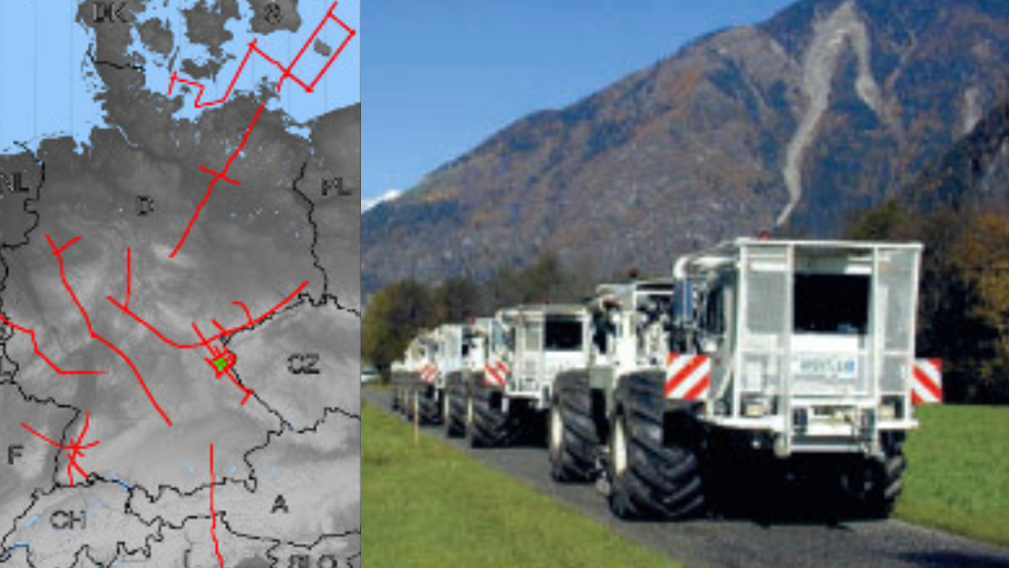DEKORP - German Continental Seismic Reflection Program
Contact:
Web:
Infrastructure belongs to:
DEKORP (Deutsches Kontinentales Reflexionsseismisches Programm) was carried out between 1984 - 1997 as the German national reflection seismic program funded by the Federal Ministry of Education, Science and Technology (BMFT), now Federal Ministry of Education and Science (BMBF). From 1983 to 1994 DEKORP was administrated by the former Geological Survey of Lower Saxony, Hannover, now Landesamt für Bergbau, Energie und Geologie (LBEG), Hannover. In 1994 the DEKORP management was taken over by Section 4.1 of the Helmholtz Centre Potsdam, GFZ German Research Centre For Geosciences.
DEKORP was founded in 1983 to investigate the deep crustal structure of Germany with high-resolution near-vertical incidence seismic methods. It was closely associated with the deep drilling project KTB (German continental deep-drilling program) as well as other European deep-seismic programs (e.g. BELCORP or ECORS). The near-vertical incidence seismic experiments of DEKORP were supplemented by wide-angle seismic experiments, and were also accompanied by research projects which were designed to improve and optimize methods of processing and interpretation. Another purpose was an intensified cooperation with industry.
The main research topic of DEKORP deep seismic studies during the first 10 years was to investigate the lithospheric structure beneath Germany. The resulting seismic images were essential contributions to (1) geological research projects revealing different units of the Central European Variscides in Germany, (2) exploration studies for a suitable KTB drilling site, and (3) supplementary and comparative experiments to the KTB.
Associated with the new administrative organisation of DEKORP since 1994, is the changed emphasis of its scientific targets. Between 1994 - 1997 the DEKORP seismic experiments focussed on lithospheric processes in different geodynamic settings, especially orogenic processes (URSEIS '95, GRANU '95, ANCORP '96, TRANSALP '98/99) and basin evolution (BASIN '96) with their attendant phenomena. For these investigations DEKORP was integrated more intensely into interdisciplinary as well as international research projects. Since the foundation of DEKORP a total of 14 seismic surveys have been carried out, each consisting of near-vertical, wide-angle and several piggy back experiments.
The DEKORP database includes approximately 40 crustal-scale 2D-seismic reflection lines covering a total of ca. 4 700 km and one 3D-seismic reflection survey covering ca. 400 km². Each DEKORP survey is provided with all datasets that are necessary for either a re-processing (i.e. raw unstacked field records in SEGY) or a re-interpretation (i.e. finally processed sections in SEGY or PNG). The raw data are sorted by records or by CDPs. The final data are available as unmigrated or migrated stacks without or with coherency enhancement. Automatical line-drawings are also included. All data come with additional meta information for each domain (source, receiver, CDP) like coordinates, elevations, locations and static corrections combined in ASCII-tables for geometry assignment. Furthermore, all metadata originating from paper copies are made available as scanned files in PNG or PDF, e.g. field and observer reports, location maps in different scales, near-surface profile headers and others.
